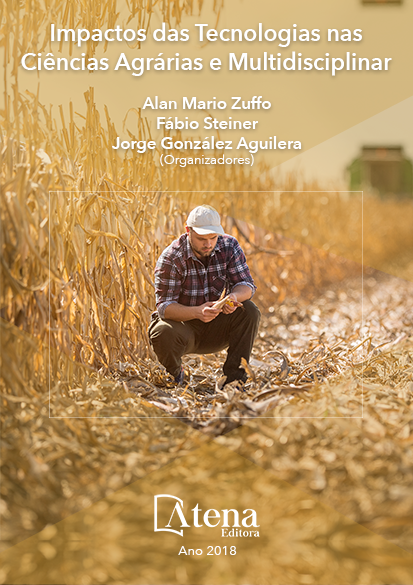
PRODUÇÃO DE MASSA SECA DE DIFERENTES CULTIVARES DE ALFACE EM SISTEMA HIDROPÔNICO
O trabalho objetivou avaliar
a produção de massa seca de cultivares
de alface do grupo crespa em diferentes
estádios fenológicos, cultivadas em sistema
hidropônico. O experimento foi conduzido
sob ambiente protegido, em delineamento
em blocos casualizado em área pertencente
a fazenda JCT agropecuária, localizada no
município de Caucaia, Estado do Ceará. O
cultivo hidropônico foi realizado com quatro
cultivares pertencente ao grupo crespa (‘Elba’,
‘Isabela’, ‘Vanda’, ‘Crespa para verão’). Durante
o desenvolvimento das cultivares, foram
realizadas cinco coletas, equivalentes a dez
plantas por repetição de forma aleatória para
a obtenção da matéria seca. A primeira coleta
foi realizada no transplantio, e as demais em
intervalos de cinco dias, até atingir 20 dias
após o transplante. Conforme a condução do
experimento, observou-se diferença estatística
na produção de massa seca entre as cultivares
somente aos 20 dias após o transplante, sendo
que a cultivar ‘Crespa para verão’ apresentou
o maior valor de massa seca, em relação as
cultivares ‘Vanda’, ‘Elba’ e ‘Isabela’. Além disso,
a maior taxa de crescimento absoluto em todas
as cultivares foi observado no período de 15 a
20 dias após o transplantio.
PRODUÇÃO DE MASSA SECA DE DIFERENTES CULTIVARES DE ALFACE EM SISTEMA HIDROPÔNICO
-
DOI: Atena
-
Palavras-chave: Lactuca sativa L., hidroponia, taxa de crescimento absoluto
-
Keywords: Lactuca sativa L., hydroponics, absolute growth rate
-
Abstract:
The objective of this work was
to evaluate the dry matter of lettuce cultivars
of the curly group in different phenological
stages, cultivated in a hydroponic system. The
experiment was conducted under a protected
environment, in a randomized block design
in an area belonging to the JCT agricultural
and cattle ranch, located in the municipality
of Caucaia, State of Ceará. The hydroponic
cultivation was carried out with four cultivars
belonging to the crespa group (‘Elba’, ‘Isabela’,
‘Vanda’, ‘Crespa’) in growing stands. During the
development of the cultivars, five samples were
collected, equivalent to ten plants per replicate at random to obtain the dry matter.
The first collection was carried out at transplanting, and the others were collected at
intervals of five days, until 20 days after transplantation. According to the conduction
of the experiment, it was observed a statistical difference in the dry mass production
between the cultivars only 20 days after the transplant, and the cultivar ‘Crespa for
summer’ showed the highest dry mass value in relation to ‘Vanda ‘,’ Elba ‘and’ Isabela
‘. In addition, the highest absolute growth rate in all cultivars was observed in the period
from 15 to 20 days after transplanting.
-
Número de páginas: 15
- FRANCISCO GILCIVAN MOREIRA SILVA


